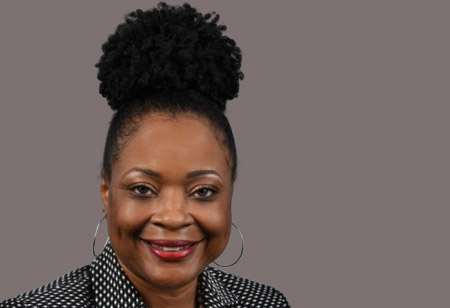Pat Jackson leads Patient Experience and Advocacy at Huntsville Hospital, ensuring patients feel heard, respected, and cared for. She drives initiatives that enhance patient experiences and support staff, combining compassion with servant and transformational leadership to create environments where both patients and teams thrive.
Early Moments That Sparked My Passion
In the city where I grew up, the two professions that commanded the most respect were nursing and teaching. My admiration for these fields was deeply rooted in my family, as one of my aunts on my father's side dedicated her life to nursing. Her compassion and commitment left a lasting impression on me.
As a freshman in college, I considered following in her footsteps and began my journey as a nursing major. However, I attended college on a full athletic scholarship that required me to travel to two or three states a week for competitions. After several conversations with my coach, I realized I could not pursue both athletics and the demanding nursing clinicals. With a heavy heart, I changed my major, though my passion to serve others never faded.
A deeply personal experience further fueled my commitment. At 33, my mom suffered a horrific back injury. Watching her navigate a broken healthcare system, often feeling unheard and frustrated, revealed how health issues ripple through every part of life. Today, I treat patients as I would want my mother treated, with dignity and respect.
Shaping My Leadership Style
My mother's struggles highlighted the importance of compassion and empathy in leadership. I wanted to be a leader who advocates for patients while earning the respect and trust of staff. Leadership is not only about managing people or processes, but about giving a voice to those who may feel ignored.
In my role, I embody compassionate, servant, transformational and inclusive leadership. I engage patients and staff, encourage feedback and foster collaboration, treating patients with the same dignity I would want for my mother. These experiences drive me to bridge care gaps and advocate for continuous improvement.
Overcoming Complex Challenges
One major challenge has been securing stakeholder buy-in while navigating competing priorities. Frequent leadership changes also require repeatedly orienting new leaders to our patient experience goals.
From these experiences, I’ve learned the power of encouragement. I actively support leaders, highlight progress, recognize achievements and frame struggles as opportunities for growth.
We keep patient experience central by linking initiatives to incentives and sharing performance metrics. Through weekly updates, monthly Power Unit meetings and collaboration with our Performance Team, we celebrate progress, foster accountability and maintain a supportive environment that drives better outcomes.
Ensuring Patient Voices Are Heard
Any organization that fails to listen to patients and families is not positioned for growth. Valuing patient feedback is at the core of our mission. We begin meetings with a safety story and end with an "experience moment," powerful narratives that remind staff of the human impact of their work. These stories shift mindsets, aligning care with values rather than numbers.
We track patient feedback in two databases and have reduced issue resolution time from 43 days in 2015 to 5 days in 2025, which also improved our HCAHPS scores. Since 2011, our Patient and Family Advisory Council has collaborated on enhancements, such as revising our lost and found policies after a mother misplaced her wedding ring. Stories like this show how feedback leads to meaningful improvements and why patient voices must always be prioritized.
Raising HCAHPS Scores and Sustaining Engagement
I began by focusing on employee engagement, since engaged staff deliver better care. We created a program that trained over 10,000 employees, including physicians, on patient experience. We established continuous feedback loops and reduced resolution time from 43 days to 5, proving to patients that their voices matter.
We revised care boards to improve communication and aligned goals with nursing leadership. We integrated best practices like bedside shift reports, which improved performance, and implemented a robust rounding initiative. On the last Friday of each month, leaders meet with patients, improving rounding scores by 4 percent in one year. Leadership visibility demonstrates commitment and provides direct insights into patient needs.
We also partnered with HR to develop a recognition program celebrating staff contributions. This boosts morale, fosters community and elevates service standards. Recognition has strengthened our culture and, in turn, improved patient experiences across the system.
Creating a Culture of Continuous Learning
Creating a culture that embraces feedback and data is a personal mission. I foster open communication, regularly check in with staff and encourage leaders to share challenges and successes. This empowers teams and ensures their voices shape our practices.
I frame data as a tool for growth, not a scoreboard. Sharing metrics helps identify trends and inspires collective solutions. By framing data as a story we can influence together, we build shared accountability for improvement.
I also lead by example, welcoming constructive criticism. This vulnerability creates a safe space for others to share openly. We revisit changes to evaluate impact, celebrate successes and learn from setbacks. My mother's struggles remind me that every metric represents a real person, keeping compassion central to our use of data.
What I’ve Learned Along the Way
Enter this field with enthusiasm and resilience. Metrics will rise and fall, so it is important to stay positive and motivate both yourself and others.
Active listening is essential. Patients often come to us in vulnerable moments, and compassion can greatly improve their experience. Always treat patients as you would want your loved ones treated. If you see systemic issues, speak up and be their voice.
What I love about my role is the chance to make hospital experiences exceptional. The dynamic work keeps me engaged after more than 20 years. I remain committed to creating an environment where every individual feels valued and empowered. Together, we can transform healthcare so every patient receives the compassionate care they deserve.




